12 Common Bucket Elevator Troubleshooting
As a kind of conveying equipment with simple structure, low maintenance cost and high conveying efficiency, bucket elevator is widely used in food, medical, chemical and mining industries, and plays an increasingly important role.
In the actual conveying operation, the efficiency of bucket elevator is affected by the problems of slipping, deviation, tearing, returning, low production and abnormal noise. In this article, we will tell 12 types of troubles and solutions of bucket elevator, to help you produce efficiently!
Bucket Belt Skidding
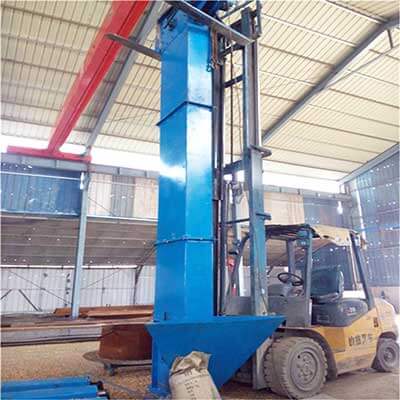
Reason 1: The tension of bucket belt is not enough
Adjust the tensioning device, if the tensioning device can not completely tighten the hopper belt, it means that the stroke of the tensioning device is too short and should be readjusted.
Reason 2: With overload, the resistance moment increases
Reduce the amount of material feeding, and strive to feed evenly, if after reducing the amount of feeding, still can not improve skidding, it may be that too much material is accumulated in the machine or the hopper is stuck by foreign bodies.
Reason 3: The inner surface of the first wheel and hopper belt is too smooth
A layer of glue can be applied to the inner surface of the head wheel and hopper belt to increase friction.
Reason 4: The bearing does not rotate well
Can disassemble, wash, refuel or replace bearings.
Bucket Belt Deviation
- The bucket belt joint is not straight, when working, the bucket belt is tight on one side and loose on the other, which makes the bucket belt move to the tight side, resulting in deviation.
- The head wheel and the tail wheel are not parallel, which leads to the deviation of the bucket belt, and it is easy to cause the impact between the bucket and the barrel and the tear of the bucket belt.
- The head wheel and tail wheel are worn seriously, so repair or replace the head wheel and tail wheel in time.
- The bucket belt is aging, replace the belt.
Bucket Belt Tearing
- The deviation of bucket belt and the shedding of hopper belt are the most likely to cause the tear of hopper belt. The cause should be found out in a timely and comprehensive manner.
- When the material is mixed with sharp-edged foreign body, the bucket belt will also be scratched. In production, steel wire mesh or magnet is installed at the feed inlet to strictly prevent large foreign bodies from falling into the machine.
Too Much Material Left in the Bucket
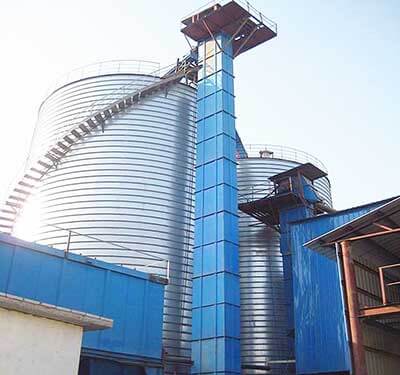
1. When lifting different materials, the speed of bucket is different: when lifting dry powder and granule, the speed is about 1-2 m/s; when lifting bulk material, the speed is 0.4-0.6 m/s; when lifting wet powder and granule, the speed is 0.6~0.8m/s.
If the bucket runs too fast, the material will be unloaded ahead of time, resulting in material return. According to the lifting material, the speed of the bucket should be reduced appropriately to avoid material return.
2. The gap between hopper and guide plate is 10~20mm. The larger the gap is, the more the material is returned; if the gap is too small, the bucket will collide with the guide plate.
Bucket Shedding
Reason 1: The feed port is too low
The position of the feed port should be adjusted above the center line of the bottom wheel to prevent the hopper from falling off.
Reason 2: Low bucket strength
The hopper is the bearing component of the hoist, which has higher requirements for its materials, so the materials with good strength should be selected as far as possible during installation. The general hopper is made of ordinary steel plate or galvanized sheet welded or stamped.
Reason 3: There is accumulation in the bucket
When starting up, the accumulation in the machine base is not cleared, which is easy to cause the bucket to break and fall off due to too much impact.
Machine Base Blockage
- Too much material is fed into the machine, which results in the accumulation of materials in the machine base and the poor operation of the bucket.
- The return material is too large, so that the lifting material can not all enter the discharge pipe and return to the machine base, so that the material in the machine base increases and causes blockage.
- When the elevator stops suddenly due to a power outage or other failure, the elevator reverses, and the material in the hopper is poured into the machine base, resulting in blockage.
- The belt slips, which reduces the lifting amount of the elevator and causes the material in the machine base to increase and form blockage.
- Large sundries enter the machine base and cause blockage.
The Material Spilled Out
- The tension of the tape is not enough, and the bucket twists because of its own weight, resulting in spreading.
- The belt runs off, and the bucket collides with the barrel and spreads the material.
- The inertia vibration of the rotating wheel and the uneven joint of the belt cause the spreading of the material.
Dust Explosion
The solution is to increase the air outlet, that is, to set up the air outlet above the discharge pipe of the elevator head, and the outlet pipe leads directly to the atmosphere to reduce the dust concentration in the head so that it can not produce powder explosion.
The Output Cannot meet Requirements
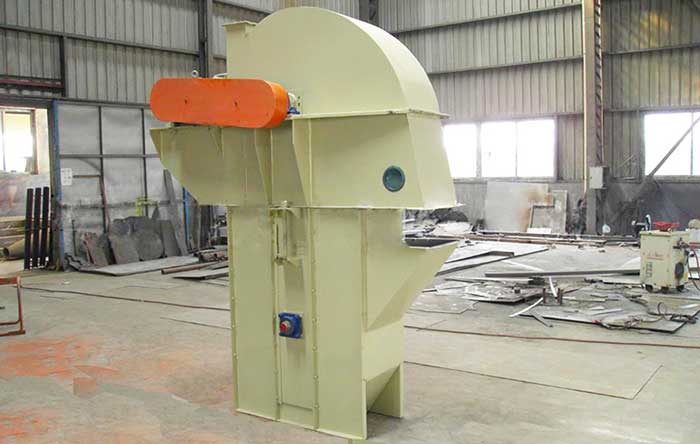
- The material is bonded to the bucket and pipe and cannot be discharged by itself. the material should be removed regularly according to the bonding degree.
- The capacity of front-end machine is insufficient and the input of materials is small, so that the bucket elevator can not reach the designed output.
- The capacity of the back-end machine is small and the discharge is blocked, so the production capacity of the rear mechanical equipment should be improved.
- The lifting speed is slow, so it is necessary to change the speed ratio of the transmission wheel.
- The material failed to fill the hopper to the maximum.
- Spread the material when you ascend.
- Discharge outlet pipe is too small or the angle is not suitable, resulting in poor discharge.
- Material return to bucket, recycling is the main reason for low output.
- Improper material measurement method, or measurement error, check the meter, check the specific gravity of the material, and re-correct the calculation method.
Motor Base Vibration
- The motor itself rotates badly, so remove the rotor to check the static balance.
- The installation accuracy of reducer and motor is poor, so it should be re-adjusted.
- The installation accuracy of the motor base is not enough and should be readjusted.
- There are errors in the installation of the head wheel and tail wheel and need to be readjusted.
- The tightness of the first wheel and tail wheel is not appropriate and should be adjusted again.
Abnormal Noise At Work
- The base plate of the bucket elevator collides with the buckets. Adjust the loosening device of the machine base to tighten the tape.
- The keys of the transmission shaft and driven shaft are loose, the pulley displacement, the bucket collides with the housing, adjust the pulley position and tighten the key.
- The guide plate collides with the hopper and trims the position of the guide plate.
- Materials are sandwiched between the guide plate and the hopper to enlarge the material input angle of the machine base.
- Bearing failure, can not operate flexibly, the bearing should be replaced.
- The material block or other foreign body is stuck in the machine base, and the machine is stopped to remove the foreign body.
- The transmission wheel bar produces idling, and the length of the belt is adjusted.
- The housing is not installed correctly, adjust the verticality of the shell.
Material Cannot Wnter Discharge Pipe Completely
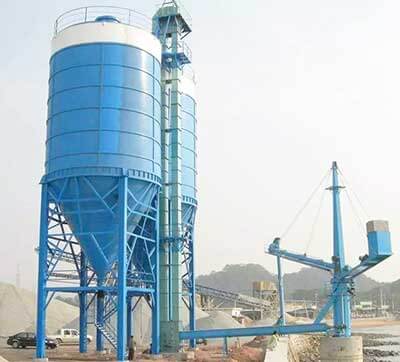
1. The material is thrown up and fly over the inlet of the discharge pipe
It shows that the geometric size of the head shell is too small. The solution is to enlarge the size of the nose shell appropriately.
2. The material is thrown very high, but it does not reach the outlet of the discharge pipe
It shows that the throwing time of the bucket is too early, and the solution is to reduce the speed of the belt. The easiest way to reduce the belt speed is to reduce the pulley on the motor.
3. The material can not be thrown into the unloading pipe, but poured into the unloaded branch barrel
This shows that the unloading of the hopper ends too late, and the solution is to modify the shape of the bucket, increase the bottom angle of the bucket or reduce the depth of the hopper.
4. When the material is thrown, it touches the bottom of the front bucket and return
This shows that the distance between the buckets is too small and the distance can be increased appropriately.
 Bucket Elevator | Structure & Types| How To Choose
Bucket Elevator | Structure & Types| How To Choose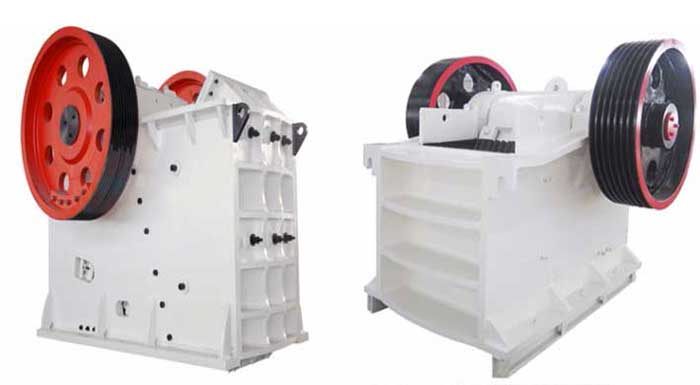 20+ Common Faults of Jaw Crusher with Solutions
20+ Common Faults of Jaw Crusher with Solutions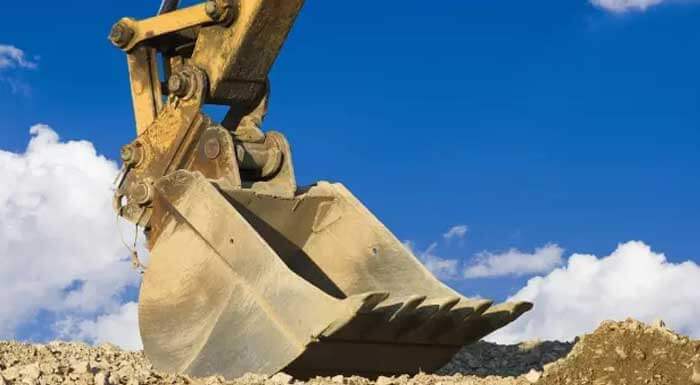 How to improve The Excavator Bucket Teeth Service Life
How to improve The Excavator Bucket Teeth Service Life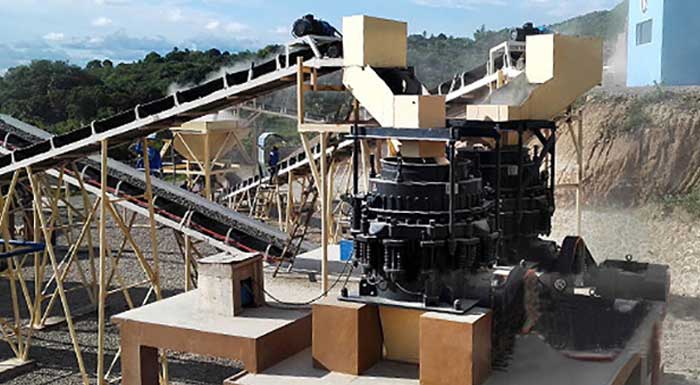 14 Cone Crusher Common Problems
14 Cone Crusher Common Problems


I work in a cement plant. The Kiln feed bucket elevator regularly trips due to spike in BE Current. Why is this happening.
I worked in a feed factory. We’ve been running smoothly for two years after installation of the bucket elevator. Currently, we started to have one of the bucket elevator continue to choke once 24hrs of run time.
Issue identify as bucket got squeeze at the bottom of the elevator when scooping material.
Thanks and appreciate you reply.
I working in fertilizer plant and write now i phased bucket elevator running with abnormal sound problem.
Bucket elevator capacity is 90 Tone Per hour
Bucket size: 500X380X580X225
Actually i replaced chain with buckets in Toto & head and tail sprockets also in Annual shutdown Dec.2023. After the replacement i taken trial in no load condition & running normal but when the material is feed in buckets means in load condition running with heavy jerk at tail sprocket side. And i checked all the three sprockets(Head,Snub & tail) but i no found particular reasons of the jerking at tail sprocket side. All sprockets checked and some erosion mark is observed but in head and snub sprocket same side observed but in tail sprocket opposite side.
so please give me a solution for this problem.
I request for suggestion and if you have interested i can send video of this problem.
Thanks
check the tension the the belt and check teeth ratio . all teeths are mesh propely on the chain and check its bearing condition .and pls provide me a video for further enquiry.
thanks